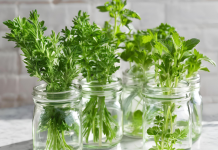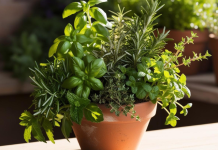Mushrooms are a delicious and nutritious addition to any meal, and growing your own mushrooms at home can be a rewarding and satisfying experience. Whether you’re a seasoned gardener or just starting out, growing mushrooms is a fun and relatively easy project that can be done indoors or outdoors.
In this blog post, we’ll cover the basics of mushroom cultivation, including choosing the right species, preparing the growing medium, and maintaining the ideal growing conditions. By the end of this post, you’ll have all the information you need to start growing your own mushrooms and enjoying the taste of fresh, homegrown produce. So let’s dive in and learn how to grow mushrooms!
- OUR RECOMMENDED PRODUCTS:
- Best mushroom grow kit here>
- Organic Pink Mushroom Grow Kit
What conditions are needed for a mushroom to grow:
Mushrooms are fungi that grow in a variety of environments. However, there are some conditions that are necessary for their growth. Here are some of the most important conditions that are required for mushrooms to grow:
Temperature: Most mushrooms grow best in temperatures between 60 and 75 degrees Fahrenheit. Different species of mushrooms have different temperature preferences.
Humidity: Mushrooms need a humid environment to grow. The ideal humidity level for mushroom growth is between 80% and 95%.
Light: While mushrooms don’t need light to grow, they do need some light to initiate the formation of fruiting bodies.
Oxygen: Mushrooms need oxygen to grow, but too much or too little can affect their growth.
Nutrients: Mushrooms require a substrate to grow on, which provides them with the nutrients they need. The substrate can be anything from wood chips to compost to straw.
pH: Most mushrooms prefer a slightly acidic pH, between 5.0 and 6.5.
Cleanliness: It’s important to keep the growing environment clean and free from contaminants, which can inhibit mushroom growth or even kill the mushrooms.
These are some of the most important conditions that are necessary for mushroom growth. By providing the right environment, you can successfully grow mushrooms at home or in a commercial setting.
How long do mushrooms grow:
The time it takes for mushrooms to grow depends on several factors, including the species of mushroom, the growing conditions, and the stage of development at which the mushrooms are harvested. In general, however, the growth cycle of mushrooms can be broken down into four stages:
Spawn Run: During this stage, the mycelium (the vegetative part of the fungus) grows throughout the substrate.
Pinning: In this stage, small bumps called “pins” start to appear on the surface of the substrate. These are the beginnings of the fruiting bodies (the mushrooms themselves).
Fruiting: This is the stage where the mushrooms grow to full size. Depending on the species of mushroom and the growing conditions, this stage can take anywhere from a few days to several weeks.
Harvest: Once the mushrooms have reached the desired size, they can be harvested. Some mushrooms, such as oyster mushrooms, can be harvested multiple times over a period of several weeks.
In general, the entire growth cycle of mushrooms can take anywhere from 2 weeks to 2 months or more, depending on the factors mentioned above.
- OUR RECOMMENDED PRODUCTS:
- Hydroponics Growing System>
- Grow Tent, 48″x48″x80″ Floor Tray for Hydroponics Indoor Plant
How to grow your own mushrooms without a kit:
Growing mushrooms without a kit can be a fun and rewarding experience, but it requires some patience and attention to detail. Make sure to research the specific requirements for the species you want to grow and follow proper sterilization procedures to avoid contamination. And you can grow mushrooms without a kit by following these steps:
Choose a mushroom species to grow: There are many different species of mushrooms that can be grown at home, but some are easier to cultivate than others. For beginners, oyster mushrooms are a good choice, as they are relatively easy to grow and have a short growing cycle.
Prepare the substrate: Mushrooms grow on a substrate, which is the material that the mycelium will feed on. Different mushroom species have different substrate requirements, but some common substrates include straw, sawdust, and coffee grounds. Sterilize the substrate to kill any contaminants.
Inoculate the substrate: Inoculation is the process of introducing the mycelium to the substrate. This can be done using spores, a liquid culture, or a colonized piece of agar. Make sure to keep everything sterile to prevent contamination.
Incubate the substrate: After inoculation, the substrate needs to be incubated in a warm, dark place to allow the mycelium to grow. This can take anywhere from a few days to several weeks, depending on the species and the temperature.
Allow for fruiting: Once the mycelium has fully colonized the substrate, it’s time to initiate fruiting. This can be done by exposing the substrate to fresh air, light, and lower temperatures.
Harvest the mushrooms: As the mushrooms grow, harvest them by gently twisting them off the substrate. Make sure to harvest them before the caps start to flatten out.
- MORE POSTS TO READ:
- THE ART OF MUSHROOM GROWING
- A step-by-step guide to mushroom growing
How to grow mushrooms indoor:
Growing mushrooms indoors is a great way to have a fresh supply of mushrooms year-round. Here are the general steps to grow mushrooms indoors:
Choose a mushroom species: Choose a species of mushroom that is easy to grow indoors, such as oyster mushrooms, shiitake mushrooms, or white button mushrooms.
Decide on a growing medium: Mushrooms can be grown on a variety of materials, including sawdust, straw, coffee grounds, and even old books. Choose a medium that is easy to sterilize and readily available.
Sterilize the growing medium: Sterilize the growing medium by boiling or pressure cooking it for at least 1 hour. This kills any bacteria or other microorganisms that could compete with the mushrooms.
Inoculate the growing medium: Once the growing medium has cooled, inoculate it with mushroom spawn or spores. This can be done using a syringe, or by mixing the spawn with the growing medium.
Maintain temperature and humidity: Mushrooms require a warm and humid environment to grow. The ideal temperature range is between 65-75°F (18-24°C), and the humidity should be around 90%.
Provide proper lighting: While mushrooms do not require light to grow, providing some light can help stimulate their growth. A fluorescent or LED light can be used.
Wait for the mushrooms to grow: After inoculation, it can take anywhere from a few days to several weeks for the mushrooms to start growing. Make sure to maintain proper temperature, humidity, and lighting conditions during this time.
Harvest the mushrooms: Once the mushrooms have fully matured, harvest them by gently twisting them off the growing medium. Cut off any remaining stem from the growing medium to prevent contamination.
Finally, growing mushrooms can be a fun and rewarding experience that allows you to enjoy the taste of fresh, homegrown produce. Whether you’re a beginner or an experienced gardener, there are many different mushroom species and growing techniques to explore.
One of the great things about growing mushrooms is that it can be done indoors or outdoors, and with a variety of different growing media. From straw and sawdust to coffee grounds and even old books, there are many materials that can be used as a substrate for mushroom cultivation.
However, as with any gardening project, there are some important things to keep in mind when growing mushrooms. Maintaining the right temperature, humidity, and lighting conditions is crucial for success, as is keeping the growing environment clean and free from contaminants.
With that said, don’t be discouraged if you encounter some setbacks or challenges along the way. Growing mushrooms is a learning process, and with each attempt, you’ll gain more knowledge and experience to help you succeed in the future.
In the end, growing your own mushrooms is a satisfying and sustainable way to enjoy this delicious and nutritious food. Not only can you save money and reduce your environmental footprint, but you’ll also have the satisfaction of knowing that you grew the mushrooms yourself. So why not give it a try and see what you can grow?
- OUR RECOMMENDED PRODUCTS:
- Best mushroom grow kit here>
- Organic Pink Mushroom Grow Kit







